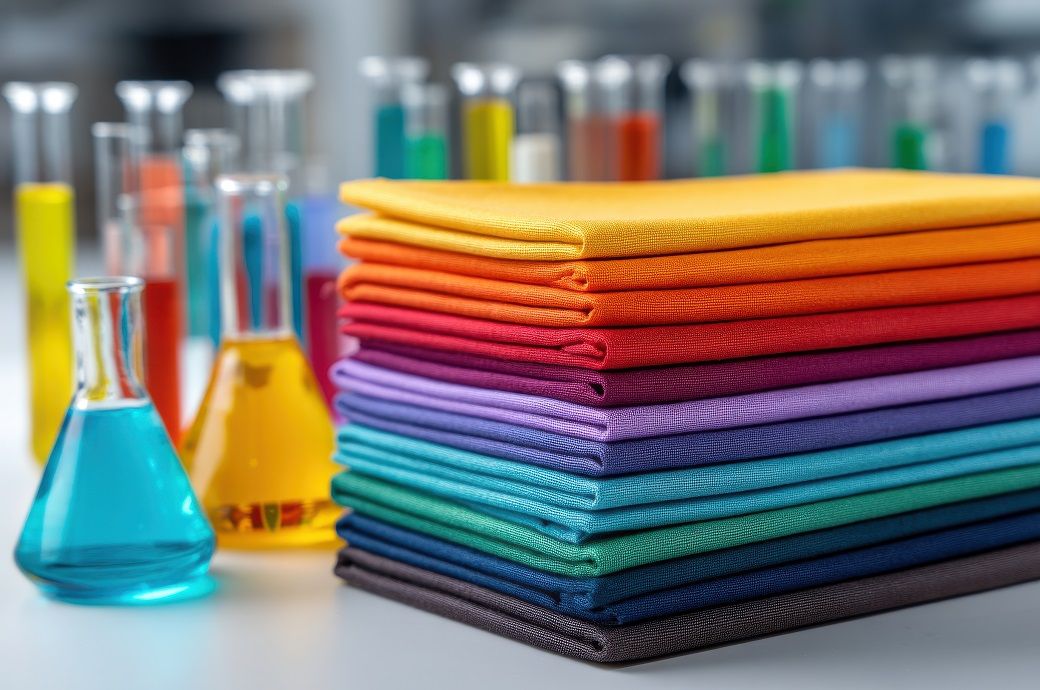
The UK’s Prince William and Oscar-winner Cate Blanchett donned lab coats during a visit to the Norwich facility of Colorifix on June 19 this year.
Colorifix—a 2023 finalist in Prince William’s Earthshot Prize—demonstrated how its micro-organisms turn natural pigments into textile dyes, underscoring how cleaner colour technologies are moving from niche to mainstream.
The Colorifix process uses the DNA codes of colours found in nature and teaches microbes to recreate them as natural dyes. The process is initiated by identifying a colour created naturally by an animal, plant or microbe and then, using DNA sequencing, identifying where the colour is coded in the genetics of the organism. The DNA code is then translated into engineered microorganisms, enabling Colorifix to produce the pigment—just as it is made in nature—and transfer it to fabrics.
Tipping point
Also in June, Inter Ikea Group led the Colorifix $18 million Series B funding round in June 2025, signalling confidence in a technology that CEO Orr Yarkoni says has already moved from grammes to tonnes of fabric per week.
The micro-organism dyes developed by Colorifix—now running in partner mills across Europe, Latin America and newly licensed sites in India and Sri Lanka—replace the 200 litres of water normally needed to dye a kilogram of cotton with a single fermentation bath that uses about 90 per cent less water and up to 70 per cent less energy, with zero petrochemical inputs.
H&M Group Ventures was also part of the latest funding round—its third investment in Colorifix—signalling that biology-based colour is no longer a fringe experiment but an investable, scale-ready solution.
Textile waste
Biella, Italy-based Officina39 meanwhile continues to develop its Recycrom range of pigment powders that are 100 per cent derived from textile waste and produced through a patented mechanical upcycling process.
These even dyes can be used on both natural and synthetic fabrics and applied by dyeing, printing, coating or spraying. They have already been adopted by a range of designers and brand partners.
To make the range even more accessible and impactful to the market, Officina39 recently launched Recycrom Ready to Dye, a range of 15 in-stock colours made from a minimum of 65 per cent recycled pre- and post-consumer textile materials, offering brands the ability to choose and create their own dyes from a standard colour chart.
Algae-based dyes
Israeli start-up Algaeing continues to develop its patented algae-based dye and ink technologies that also provide a sustainable alternative to conventional synthetic dyes. The process is based on fast-growing algae cultivated in closed-loop vertical farms as the raw material.
This requires only solar energy and salty or desalinated water, eliminating the need for agricultural land, pesticides or freshwater irrigation. The resulting products—Algadye (dye) and Algaink (ink)—are non-toxic, biodegradable and free from synthetic petrochemicals.
Life-cycle tests show Algadye can cut dye-production greenhouse-gas emissions by 70-74 per cent and water use by 98 per cent compared with petro-synthetic colourants.
Slovenia’s BETI now spins 15 Algadye yarn shades for lingerie and sportswear, Organic Basics launched the first algae-dyed intimates line and Portugal’s RDD Textiles showed pink and Atlantic-blue tennis kits using Algadye this year. A Summer 2025 capsule with deeper blues and greys broadens what was previously an earth-tone palette.
Tighter limits
The EU’s Ecodesign for Sustainable Products Regulation (ESPR), in force since July 18, 2024, sets tighter limits on waste, water and hazardous chemicals, explicitly flagging “water-free and low-chemistry dyeing” as a compliance route.
Designers are leaning into the novel aesthetics these chemistries unlock. Colorifix engineered microorganisms enable dyehouse partners to grow pigments via fermentation—just as they are made in nature—and transfer them to fabrics.
Algae inks from Algaeing give garments soft, heathered blues and greens that synthetics can’t mimic, while Officina39’s Recycrom delivers vintage, stone-washed denim looks without bleach or potassium permanganate.
A major benefit of all of these new dyes lies in compatibility with existing machinery in dyehouses.
The convergence of biological innovation, tightening regulations and creative exploration is fundamentally shifting textile dyeing from an environmental liability toward a scalable, cleaner process. While scaling these solutions economically remains a hurdle, the transition is demonstrably underway.
ALCHEMPro News Desk (IL)
Receive daily prices and market insights straight to your inbox. Subscribe to AlchemPro Weekly!